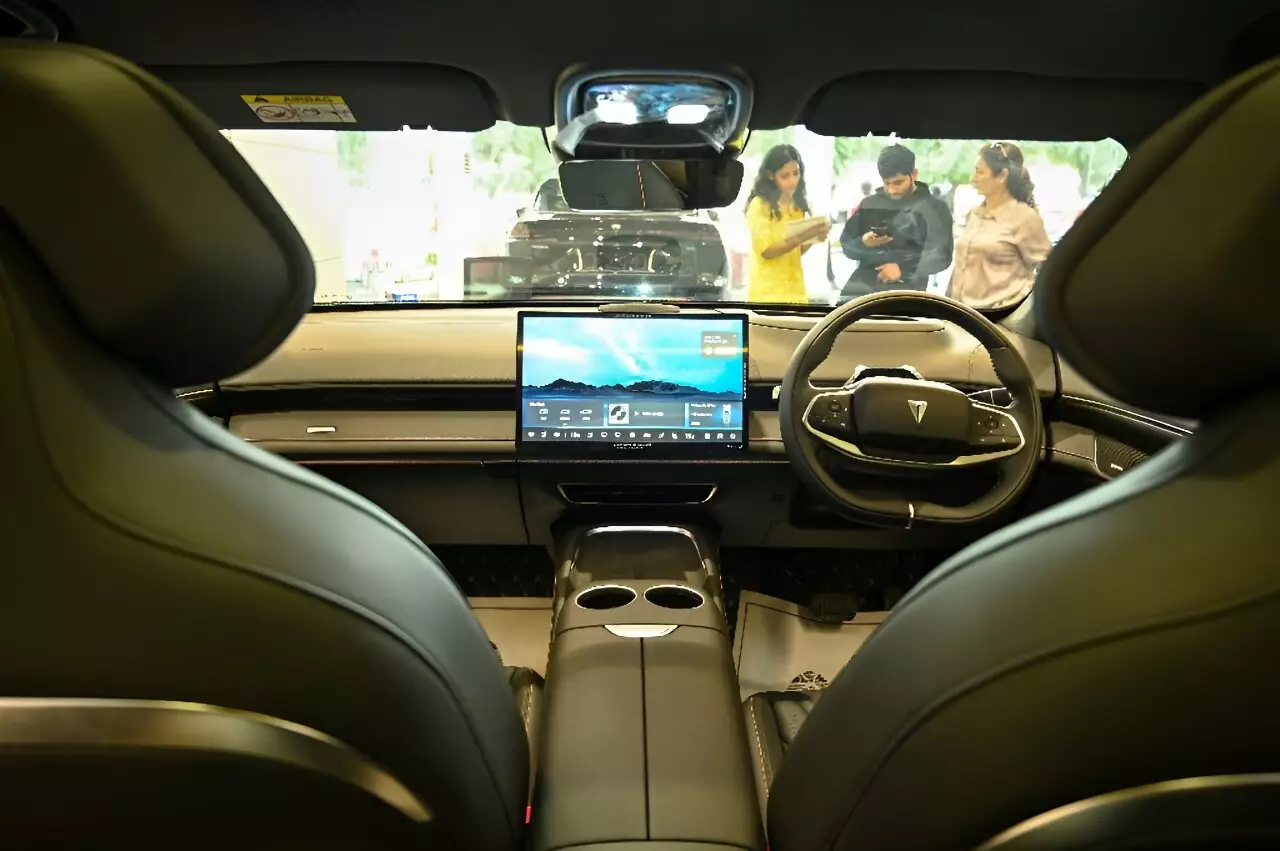In recent years, Nepal has quietly entered a transport revolution, driven by an explosion in electric vehicle (EV) adoption. Once characterized by a dependence on fossil fuels and erratic power supply, the nation is now witnessing a significant shift toward sustainability. This transition, exemplified by taxi driver Surendra Parajuli and his new electric cab, reflects larger systemic changes in the country’s energy landscape and vehicle market. However, despite the promise of a greener future, the implications of this switch warrant a careful examination of both benefits and drawbacks.
Parajuli’s experience epitomizes the cost benefits associated with electric vehicles. Previously, the chronic shortage of electricity and reliance on imported fossil fuels made the idea of switching to an electric cab impractical. Today, the proliferation of hydroelectric dams has altered this narrative, serving to provide inexpensive energy that empowers drivers to make the transition. This newfound affordability has not only made significant savings possible for taxi drivers but has also inflamed broader economic aspirations.
Since the onset of the electric vehicle boom, Nepal is reported to have over 40,000 EVs registered, which, despite being a small fraction of the overall vehicle count, marks a noteworthy increase. The fact that more than a quarter of these vehicles were imported in just a year signifies an insatiable market demand. Encouraged by favorable conditions, this trend illustrates a departure from the country’s history of reliance on costly petrol cars, increasingly associating economic vitality with eco-friendliness.
The Energy Transformation Background
Historically, Nepal’s energy landscape was marked by power shortages, with a staggering four out of five citizens lacking reliable electricity access at the dawn of the century. Fast forward two decades, and the landscape has been transformed—thanks to significant investments in hydroelectric infrastructure. Today, around 95% of Nepal’s population enjoys electricity, with the government projecting substantial exports of surplus energy to neighboring India. This surge in electricity generation positions Nepal as a potential powerhouse in renewable energy, while simultaneously catalyzing the growing electric vehicle sector.
According to Kulman Ghising from the Nepal Electricity Authority, this shift has fundamentally altered the economic dynamics of transportation. The country’s ability to produce and consume hydroelectric power allows local motorists and businesses to bypass the high costs associated with fossil fuel imports, saving approximately $224 million in demand reduction alone. Such financial relief fuels optimism about Nepal’s long-term transition to electric mobility.
Environmental Consequences: A Mixed Blessing?
With projections of the government’s plan aiming for 90% of all private vehicle sales to be electric by the end of the decade, the promise of improved air quality and reduced greenhouse gas emissions lingers on the horizon. However, the environmental costs of such rapid development cannot be overlooked. While electric vehicles are powered by green energy in Nepal, the shift to large-scale hydropower generation has raised concerns among environmental advocates.
The construction of new dams, aimed at bolstering the energy supply for an expanding EV market, poses risks to sensitive ecological regions, including tiger habitats and protected forests. Climate change further exacerbates vulnerabilities, increasing the likelihood of catastrophic floods and landslides that could compromise newly built infrastructure.
Moreover, the government’s eagerness to promote electric vehicles raises an important question about sustainability practices surrounding electronic waste. As EVs gain popularity, so do the challenges associated with disposing of their lithium-ion batteries, which incorporate hazardous materials. The lack of a comprehensive strategy for handling electronic waste has sparked concerns that Nepal may not be adequately prepared for the environmental repercussions of mass EV adoption.
Critics point to the rush for immediate gains while neglecting to consider the long-term implications. Nabin Bikash Maharjan from Blue Waste to Value emphasizes the need for a holistic approach to environmental stewardship rather than a fixation solely on electricity generation and EV sales.
As Nepal stands on the cusp of an electric vehicle revolution, the journey toward a sustainable future remains precarious. While the prospects of economic growth and a cleaner environment ignite hope, the shadows of ecological risk and electronic waste management linger heavily. Balancing these competing narratives will be crucial as the nation navigates its path forward. Prioritizing long-term strategies and sustainable practices will ensure that the shifts occurring within Nepal’s transport system do not compromise the very environment it seeks to protect. In essence, the transition towards electric vehicles is as much a societal responsibility as it is an economic opportunity, and only through conscientious planning can the country truly thrive in this new era.


Leave a Reply